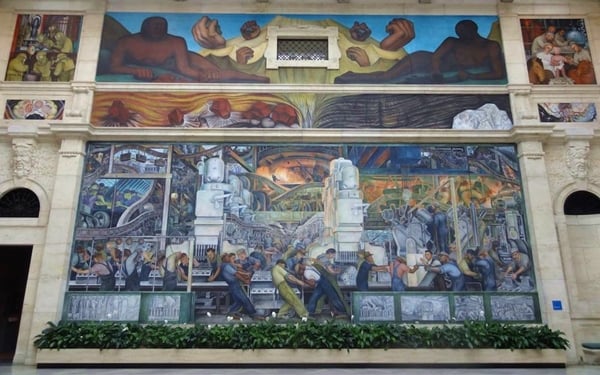Art World
Diego Rivera Murals at the Detroit Institute of Arts Named National Landmarks


Benjamin Sutton

The iconic Detroit Industry murals painted by Mexican artist Diego Rivera in the Detroit Institute of Arts’ Garden Court (since renamed Rivera Court) between 1932–33 were designated a National Historic Landmark last week by U.S. Interior Secretary Sally Jewell, the Detroit Free Press reports. The spectacular series of frescoes portraying the complexity and dynamism of Detroit’s manufacturing sector, as well as more metaphysical themes in its upper frieze, joins more than 2,500 sites, monuments, structures, and artworks so designated by the National Historic Landmarks Program (NHLP).
While the program’s website explains that the designation “may provide the property’s historic character with a measure of protection against any project initiated by the Federal government,” it’s unclear whether it provides any additional measure of protection against Detroit’s creditors who hope to sell off the DIA’s collection. In fact, the process of designating the Detroit Industry murals historic landmarks began long before the city of Detroit declared bankruptcy and its art collection came under threat. According to the Free Press, the murals were first selected for designation at least two years ago, as part of a NHLP push to identify sites related to Latino culture in the US. The city’s mayor Dave Bing and the City Council approved a motion to designate the murals Historic Landmarks in June of 2012.
Rivera, who is regarded as the foremost muralist of the Depression era, was commissioned to paint the Detroit Institute murals—which, among other subjects, depict the Ford Motor Company’s River Rouge plan—by Edsel Ford and William Valentiner, the DIA’s director at the time. He was paid $25,000 for the commission. The full cycle of murals consists of 27 panels, and was considered by Rivera to be his most successful work.